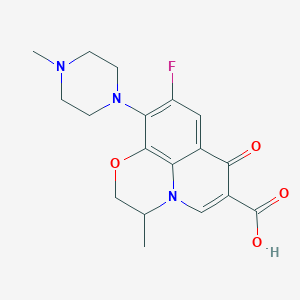Pelvic inflammatory disease
Adult: 400 mg bid via slow infusion over at least 1 hour for 14 days.
Intravenous
Acute exacerbations of chronic bronchitis, Community-acquired pneumonia
Adult: 200 mg bid via slow infusion over at least 30 minutes.
Intravenous
Prostatitis
Adult: 200 mg bid via slow infusion over at least 30 minutes, may be increased according to severity to 400 mg bid infused over at least 1 hour. Treatment duration: 2-4 weeks (acute); 4-8 weeks (chronic).
Intravenous
Pyelonephritis
Adult: 200 mg bid via slow infusion over at least 30 minutes, may be increased according to severity to 400 mg bid infused over at least 1 hour. Treatment duration: 7-10 days, up to 14 days as necessary.
Intravenous
Complicated skin and soft tissue infections
Adult: 400 mg bid via slow infusion over at least 1 hour.
Intravenous
Complicated urinary tract infections
Adult: 200 mg bid via slow infusion over at least 30 minutes, may be increased according to severity to 400 mg bid infused over at least 1 hour. Treatment duration: 7-21 days.
Intravenous
Epididymo-orchitis
Adult: 200 mg bid via slow infusion over at least 30 minutes, may be increased according to severity to 400 mg bid infused over at least 1 hour. Treatment duration: 14 days.
Intravenous
Lower respiratory tract infections
Adult: 200 mg bid via infusion over at least 30 minutes, may be increased according to severity to 400 mg bid infused over at least 1 hour.
Ophthalmic
Bacterial conjunctivitis
Adult: As 0.3% eye drop solution: Instill 1-2 drops into the affected eye(s) 2-4 hourly for days 1 and 2, then instill 1-2 drops 4 times daily for days 3-7. Max treatment duration: 10 days.
Child: ≥1 year Same as adult dose.
Child: ≥1 year Same as adult dose.
Ophthalmic
Bacterial corneal ulcer
Adult: As 0.3% eye drop solution: Instill 1-2 drops into the affected eye(s) every 30 minutes while awake and 4-6 hourly after retiring for days 1 and 2. Starting on day 3, instill 1-2 drops hourly while awake for 4-6 additional days; thereafter, 1-2 drops 4 times daily until clinical cure is achieved.
Child: ≥1 year Same as adult dose.
Child: ≥1 year Same as adult dose.
Oral
Uncomplicated cystitis, Uncomplicated urinary tract infections
Adult: 200 mg 12 hourly for 3-7 days.
Oral
Acute exacerbations of chronic bronchitis, Community-acquired pneumonia, Uncomplicated skin and skin structure infections
Adult: 400 mg 12 hourly for 10 days.
Oral
Acute pelvic inflammatory disease
Adult: 400 mg 12 hourly for 10-14 days.
Oral
Prostatitis
Adult: 200 mg bid, may be increased to 400 mg bid according to severity. Treatment duration: 2-4 weeks (acute); 4-8 weeks (chronic). Alternatively, 300 mg 12 hourly for 6 weeks.
Oral
Skin and soft tissue infections
Adult: 400 mg bid.
Oral
Non-gonococcal cervicitis/urethritis due to Chlamydia trachomatis
Adult: 400 mg daily as single or in divided doses. Alternatively, 300 mg 12 hourly. Treatment duration: 7 days.
Oral
Complicated urinary tract infections
Adult: 200 mg 12 hourly for 10 days. Alternatively, 200 mg bid, may be increased to 400 mg bid according to severity for 7-21 days.
Oral
Uncomplicated gonorrhoea
Adult: 400 mg as a single dose.
Oral
Lower respiratory tract infections
Adult: 400 mg daily, increased to 400 mg bid if necessary.
Otic/Aural
Otitis media
Adult: Chronic suppurative cases with perforated tympanic membranes: As 0.3% otic solution: Instill 10 drops (1.5 mg) into the canal of the affected ear(s) bid for 14 days.
Child: ≥12 years Same as adult dose.
Child: ≥12 years Same as adult dose.
Otic/Aural
Acute otitis media
Child: With tympanostomy tubes: 1-12 years As 0.3% otic solution: Instill 5 drops (0.75 mg) into the canal of the affected ear(s) bid for 10 days.
Otic/Aural
Otitis externa
Adult: As 0.3% otic solution: Instill 10 drops (1.5 mg) into the canal of the affected ear(s) once daily for 7 days.
Child: 6 months to 13 years Instill 5 drops (0.75 mg) into the canal of the affected ear(s) once daily for 7 days; >13 years Same as adult dose.
Child: 6 months to 13 years Instill 5 drops (0.75 mg) into the canal of the affected ear(s) once daily for 7 days; >13 years Same as adult dose.




 Sign Out
Sign Out




